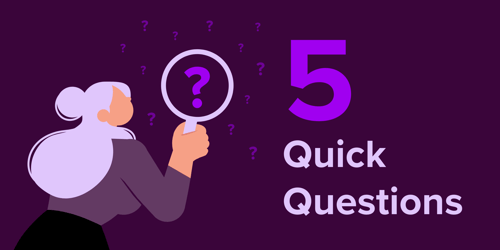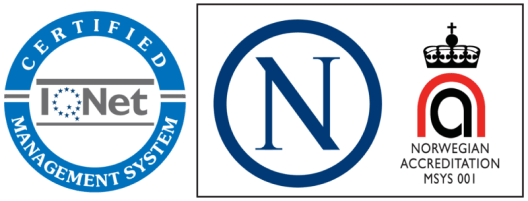So, your technology strategy’s finished. The objectives, tactics and principles have been made. Now what?
Call in the Enterprise Architects (EAs). They have the overview to get it all done, right?
Yes and no. EAs should be thought of as skilled map makers. Given the right set of tools, they can create a roadmap that will help turn today’s technology strategy into reality.
It’s essential to know where you are in order to reach your destination. The roadmap crafted by EAs can give you that needed overview, helping you visualize where you are and where you’re going. A good tool will show people, applications, infrastructure, projects and responsibilities, to name a few. Then you can filter the information to address specific strategic issues or questions.
Granted, not all technology strategy implementations need roadmaps, but most do. Roadmaps not only provide everyone with an overview of the transition, but they also help people communicate the architectural changes along the way.
Each technology strategy needs a customized implementation approach. However, we’ve gathered some general, topline ideas to give you a clear idea about how Enterprise Architecture can aid in the implementation process.

Keep on Top of Continuous Change
Before digging in, remember that implementing a technology strategy is strongly connected to the art of navigating change. So it’s essential to keep an eye out for new ways to implement the changes needed for a solid strategy or even be prepared to change the direction.
By keeping an eye on the current domain trends, your Enterprise Architecture team can help implement and prepare for change.
Know What You Have
When you’re implementing a tech strategy, you’ll likely impact your tech stack. So, it’s essential to know what’s in the stack in order to assess and understand the impact, and build a clear understanding of your starting point. If you lack insight into your application and infrastructure portfolio, you should probably start with a good architecture tool like we mentioned earlier.
Example: If you’re implementing a cloud migration strategy, these EA tools would show how many on-premise applications you have and help architect, plan and execute the move to the cloud.
Suppose you’re using a tool like Ardoq. You’ll be able to walk through use cases to have an overview of your assets. Examples below.
|
Use Case |
Tangible Outcomes* |
|
Application Lifecycle Management (ALM) and IT Lifecycle Management (ITLM) |
|
|
|
|
|
|
Business Capability Modeling and Business Capability Realization (BCM/BCR) |
|
*Based on the assumption you’re using a tool similar to Ardoq.
Analysis of Your Technology Strategy
Just as every strategy differs, the analysis does as well. A roadmap is crucial for an organization to define its goals or technology outcomes. It can also empower you to analyze the significant steps and milestones needed to reach them. Here are a few diverse examples of how a roadmap could help.
Understand Applications Interactions and Infrastructure Dependencies
When your strategy includes working with applications, you can map dependencies between different applications and the application’s infrastructure. With this overview, you have a picture of the applications, know where dependencies are, and understand the effect of changing or phasing out applications. In addition, you can see if change initiatives overlap to make execution difficult.
A dependency map helps visualize the dependencies. A thorough analysis and good visuals will help you understand:
- Dependencies, opportunities, and constraints
- Which application integrations would need replacement if an application is phased out
- Which infrastructure components can be phased out together with the application
The image below shows the dependencies between applications and the underlying infrastructure.
Know The Connections Between Your Applications
It’s important to fully know all the connections between applications when you’re moving them. This can help you assess the impact on other connected applications and the business areas affected by these applications and determine the effort required to move the connections accordingly.
See the Costs of Change in a Cost Map
While assessing the benefit of change, the cost can be a considerable factor. Maybe the application costs $50,000, and implementing this part of the strategy costs $100,000. But what’s the benefit of the change? Is it only monetary? When, if ever, will the monetary benefit exceed the cost of change?
Unfortunately, cost/benefit isn’t a black and white number. You’d also need to consider the non-monetary benefits of the change. Perhaps it saves time or gives a value that is not evident in terms of numbers.
Being able to clearly map an application’s cost will allow you to understand:
- Current cost of infrastructure and applications
- The cost structure, and its impact on capabilities and organizational units that use the applications
Know the Timeline of the Change
When moving applications it’s important to know the connections between those applications fully. This can help you assess the impact on other connected applications and determine the effort required to move the connections accordingly.
When phasing out an application, a roadmap helps you visualize every step of the process with:
- Clear timelines
- Overview of the current state
- Target view of the desired end state
Get Buy-in for Your Technology Strategy Roadmap
After careful analysis, you’ll find a way to handle the execution. Usually, the execution takes place in several layers, broken down into steps, taking action incrementally.
A roadmap allows you to set a structure for displaying information based on the stakeholders. Each stakeholder has a different perspective, and you can change your map to match what they need to see. The map also gives you the big picture of where to take the incremental steps. Importantly, you’ll see the dependencies and how tasks are linked to know the order of your steps.
Example: With a roadmap, you can better plan your infrastructure, seeing if you need to have some temporary infrastructure to facilitate moving your application to the cloud.
Use the Human Factor When Executing Strategy
To make a roadmap instrumental in execution, including people is important. Once the people are on the map, you can fully see who is responsible for what and what the impact of your critical project.
Democratize Your Enterprise Architecture
Having a roadmap is all well and good, but there’s a catch. Everyone’s experienced it when driving; you’re driving on new asphalt, but your GPS app suddenly shows no road and demands, “Please proceed to the route”. The culprit of this confusion? The app isn’t up-to-date.
Enterprise Architects can help prevent your organization from suffering a similar problem. By asking the “road builders,” (i.e. application specialists or software architects) in your organization for frequent updates, EAs can maintain a continuously updated current-state architecture for the roadmap.
With democratization, everyone reports about their “roads” - applications and work - building a comprehensive picture. The democratization process could be made easier with surveys and features like Broadcasts, which provide automation for surveys, follow-ups based on participants' answers, and automatically add data to the architecture repository as it arrives.
WARNING: It’s not advisable to execute this with Excel. Maintaining the As-Is with a spreadsheet is a nightmare at best. To be effective and accurate, you’ll need a dynamic tool to help you gather the data, put it into your system, maintain it and use it in an ongoing way with minimal, manual pain.
Continuous Progress Reports
With a clear picture of the As-Is, thanks to democratization, it’s easy to take the step of issuing continuous progress reports.
At logical points during the incremental progress, stakeholders can be updated, showing them the progress on the roadmap. You could include metrics, how far you are in progress, which areas need more attention.
Turning Technology Strategy Implementation Into Reality
Whatever your strategy, several tools might be essential to realizing it. A roadmap will show how to develop the strategy while adding people into your infrastructure. Finally, democratization in how you gather information for the roadmap will save time and give you good and useful data to support your technology strategy.
Stay on top of the ever-evolving field of EA. Read our guide to see what top minds and leading practitioners have predicted for EA this year: 12 EA Predictions for 2024
 Ardoq
This article is written by Ardoq as it has multiple contributors, including subject matter experts.
Ardoq
This article is written by Ardoq as it has multiple contributors, including subject matter experts.








